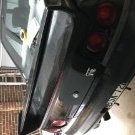Rb30(26)dett Head Porting
Announcements
-
Similar Content
-
Latest Posts
-
lol yes, I have 3 trickle chargers....but even if you don't have too many cars they still need a secure space near 240v to be connected....FWIW I also have battery earth disconnect switches on the cars I use least, just open bonnet and turn switch after use ...plus I think it was earlier in this very thread when Dose had a charger fail and try to burn his car down without warning
-
By TurboTapin · Posted
Be certain not to purchase your Tomei head gasket from an North American distributer. Tomei USA and Tomei JPN are not comparable. I have cheap PRP 1.5mm restrictors if you need, they're collecting dust.






Recommended Posts
Create an account or sign in to comment
You need to be a member in order to leave a comment
Create an account
Sign up for a new account in our community. It's easy!
Register a new accountSign in
Already have an account? Sign in here.
Sign In Now